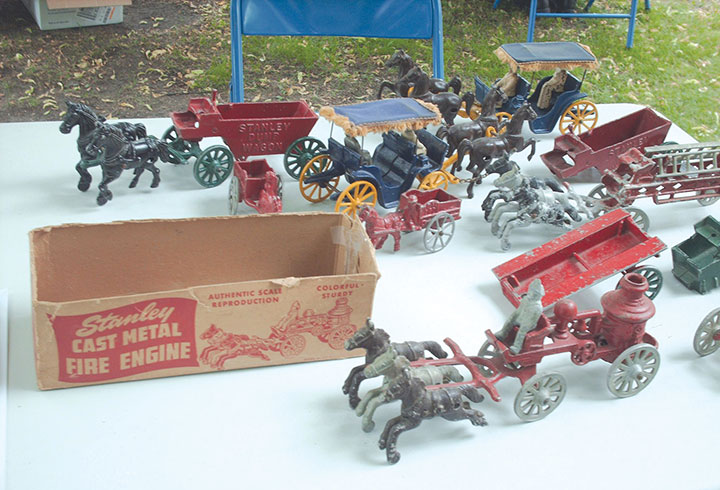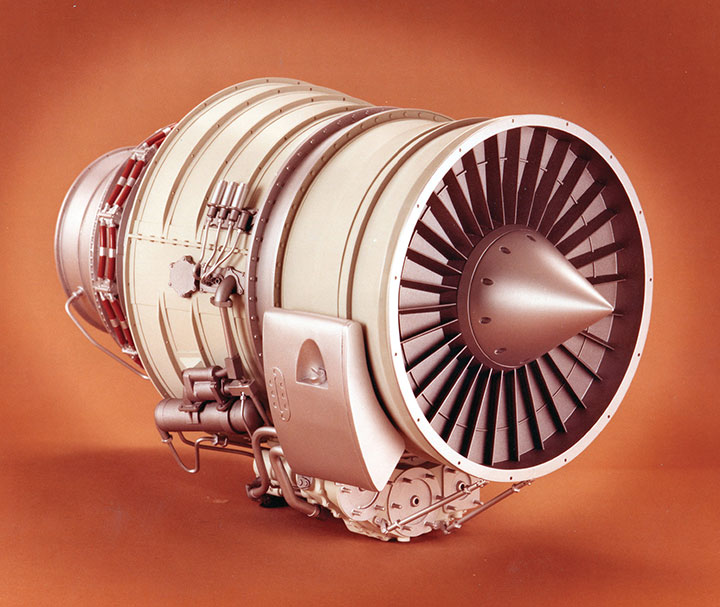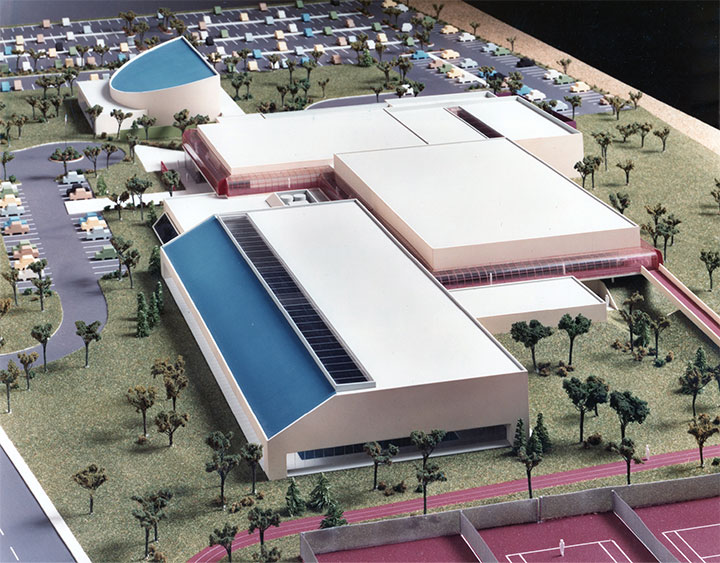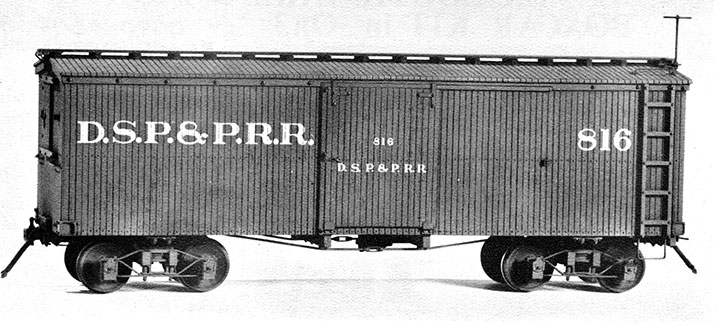If you have copies of Bob’s first magazine Finelines you will find Coronado Scale Models first ad in the September 1966 issue. If you have the very first GAZETTE, March/April 1975, you will find an ad from Coronado Scale Models. If you look through this issue of the GAZETTE, you will also find an ad for Coronado. Indeed, you will find an ad from them in every issue. Probably the best-known supplier of narrow gauge products, Coronado is also the “last man standing” of exclusively model railroad hobby shops in the immediate Phoenix area. (At least they were my last trip there in 2021.) Coronado has been operated by Stan and Sheldon Schwedler since its beginning and it seems only appropriate to continue my occasional discussion of pioneer or significant narrow gauge suppliers with Coronado.
In the digital era of the internet, Coronado is analog. They not only preceded the internet, but they also anticipated it by marketing through mail order service to narrow gauge modelers around the world from the very beginning. By not just stocking and supplying products, but also offering repairs, modifications and proprietary products; Coronado has been the “go to” place for narrow gauge for decades. Stan and Sheldon Schwedler are synonymous with excellent service and helpful information. Often mistakenly identified as “twins,” the brothers are separated by five years. When confronted by this fact, they reply that they are still twins; their mother just experienced a difficult delivery!) It is not surprising that they ended up in the model business which was probably in their genes.
Their parents, Chester and Eleanor Schwedler, lived in Oconto, Wisconsin, north of Green Bay, when the children were born. Sister Sharon came first in 1937 followed by Sheldon in 1940 and Stanley in 1945. (The Schwedlers ruefully note their parents’ obsession with “S” names.) In 1946, Chester started a toy company in Oconto, naming it after his youngest child. The Stanley Toy Company occupied a venerable brick building at 1301 Main Street on the corner with Park Avenue. The building started as a Music Hall, later a woolen mill and finally, Schumacher’s Grocery & Meat Market. This factory must have been a significant occasion as the local paper carried articles about the proposed toy factory use, its grand opening and even an automobile accident when a wayward car slammed into a corner of the factory. Stanley Toy Company manufactured cast iron toys, like those of the turn of the 20th century. But they were made of aluminum. They specialized in horse-drawn wagons, carriages, and Easter Bunny carts. A picture, courtesy of Oconto History, shows some of their products which included a steam pumper fire engine and ladder truck. All came painted. One newspaper story mentions Stanley Toy exhibiting at the prestigious New York Toy Show. Another describes a tour given at a local Kiwana’s club in 1948, including Stanley’s new foundry on Pierce Street and noted that sales were increasing. Indeed, Chester Schwedler cited that after only two years in business, there were sales in all 48 states and that Stanley Toys were sold in every Montgomery Ward store. By the way, each touring Kiwanian was given a toy of their choice at the conclusion of the tour.

-Photo courtesy Oconto History.
Tragically, the Stanley Toy Company abruptly ended with a catastrophic fire on December 29, 1949. Although only in business for a few years, its impact was measurable. Stanley Toys are still sold on eBay and other sites, and in 2012, David L. Retzlaff, who owns what is left of the building, published a 75-page book, The Stanley Toy Company: Fame to Fire, which commands top prices on the used book market. In 1951, the family moved to Phoenix as Chester was offered a job in sales for a company in central Phoenix. A year later, their mother, Eleanor, died leaving the raising of the two boys to 14-year-old Sharon. She continued doing so through high school and beyond, eventually earning a degree in education. She later married the next-door neighbor, Donald Caughlin, who joined the Air Force. After multiple transfers around the country and two sons, they ended up in North Carolina, where they lived for many years. Sharon outlived her husband Donald (2006) and youngest son Larry (1981) and moved to San Antonio to be cared for by her eldest son Bill, where she died in 2015, ironically in a hospice called the “Coronado.”
When Sheldon finished school, he worked as an architectural model builder for a local Phoenix firm. Stanley later did the same. In 1965, Coronado Scale Models was created with Sheldon as “owner” and Stanley as sole employee, a relationship which continues to the present. They picked the name after the first narrow gauge engine of the Coronado Copper Company, described in Volume III of David Myrick’s epic Railroads of Arizona series. Sheldon started with Lionel and then switched to O scale. Dick Andrews and his Railroad Model Craftsman Narrow Gauge Junction articles, plus a visit in 1955 to the Knott’s Berry Farm model shop, cemented narrow gauge modeling in Sheldon’s mind.
For a few years, the industrial model business was lucrative as Phoenix began its steady increase in population. There was a continuing demand for architectural models used to obtain permits or sell real estate. Motorola was an increasing source of business as an employee in their art department fed work to the brothers such as making large models of transistors and power units, award plaques and even cabinets. The models were used for ads and product listings in catalogs. The Schwedler brothers were also employed by noted architect and railroad author Dick Dorman on some projects of his, as well as for other major firms. Their model work changed from primarily housing models to hospitals, convention centers and the occasional 3D topographic model of a subdivision with Monopoly style houses. There were some impressive projects. They made a huge topographical map for Kennecott Copper, and one of the Del Webb golf courses. The latter showed individual holes with elevations to facilitate landscaping planning. Over time, architectural models became more demanding and expensive to produce so the demand began to dwindle.


The Schwedlers began to pivot in the early 1960s from purely industrial modeling. In 1963, they met Bob Brown and Valley Car Work’s owner Lee Klaus in Bakersfield at a PCR meet. In 1965, Sheldon bought the mail order business portion of Valley Car Works from Lee and in 1966, the inventory. The Schwedler’s also began selling plans from Herman Darr, Ken Pruett, Lee Klaus, and David Braun. In the early 1960s, Cliff Grandt began his line of parts, a natural fit to the Valley Car Works line, and the Schwedlers soon added that line to the products available by mail order. The 1966 PCR convention in Riverside, California, was the first time Coronado displayed their wares. They have since been a reliable vendor at many narrow gauge, NMRA and O Scale West trade shows.
From 1965 to 1970, the Schwedlers had occupied part of a building on East Cypress Street in the Coronado District of Phoenix. Next door was a retail operation. The Schwedlers decided they needed a retail store and fortunately that space became available. This enabled them to continue their model making activities and also operate a retail outlet for their growing line. In 1970, Coronado Scale Models opened the doors at 1544 E. Cypress Street, where they are located today. The hours are interesting: 8-12 then 1-5. Although not a Union shop, they religiously take an hour for lunch. Now anyone who has visited also notes two things: there is no large “Coronado” sign, and the neighborhood is, how do you say …. a bit “iffy”? The Schwedlers report it used to be worse. One day, the brothers watched a “sting” operation, listening on the police scanner, as an undercover “hooker” stood in front of their store attracting “Johns” who were promptly arrested. No, the “Johns” were not Coronado customers. But yes, Coronado is a full-service hobby shop! Given the neighborhood, which by the way is safe during the day at least, no large sign is needed. This is not a shop for walk in customers but rather a destination shop. And there is never a parking problem.
What sets Coronado apart, however, is not as the source of narrow gauge kits and parts, though it is. Coronado is renowned for the advice, service and unique products offered for narrow gauge modelers. On internet narrow gauge chat rooms, whenever anyone has a question about how to convert an On30 locomotive to On3 or add details, the response often is to contact Coronado for help. Stan and Sheldon are famous for performing miracles and dispensing sage advice to solve a myriad of modeling problems. It only makes sense given their professional backgrounds.
In 1970, they took over an On3 DSP&P boxcar project from Jon MacNeil of Denver and manufactured 100 kits. Ron Parkhurst (Timberline) cut the wood; Allen Brewster drew the plans. Charles Brommer did patterns (as did the Schwedlers). Brommer also made couplers, bolsters, and brake cylinders. Cliff Grandt provided ladders and other detail parts, and Chuck Francis of Thin Film did the decals. A stellar cast. This kit was sold as a body-only kit. The listing of sources demonstrates the level of care and accuracy put into this kit. Also offered were castings for a Gilpin truck, done before Grandt Line’s Gilpin ore car kit. A resin cast square water tank for an Uintah water car was proposed but never produced because of casting problems. It is my understanding that Coronado also offered conversion services and other modeling assistance that made narrow gauge modeling easier to accomplish in the days before the plethora of products later available.

In the 1960s Stan and Sheldon, along with David and Sondra Gast, and Donn Barber founded the “30” Gauge Guild. An On21/2 (as it was then known) group who built a small On30 layout and wrote it up for the November 1962 RMC.
Having started in HOn3 narrow gauge modeling in 1969, I can attest to the challenges faced when the only ready-to-run motive power were brass imports, which usually were marginal runners. The joke was that if you modeled in HOn3, you also modeled in HO; not to demonstrate the difference in size but to have something to run! If you wanted rolling stock, you either scratchbuilt or assembled craft kits. The Schwedlers helped people successfully model narrow gauge. They carried kits, parts, and expertise on how to successfully accomplish any narrow gauge goal. For decades, Coronado has been the go-to place not just for advice, but for the supplies needed to create your narrow gauge dream. Though they specialized in On3 at first, they carry all scales and are superb modelers in any scale. They combine retail experience with modeling expertise, a rare commodity in a “hobby shop.”
Stan and noted railroad artist, Jan Rons, attended college together and joke that they have survived all these years. So has Coronado. The Schwedlers have been an integral part of narrow gauge since the early 1960s and show no signs of slowing down. A visit to their shop is more than a hobby experience, it is also a reunion with old friends. Their sardonic humor and irreverent tone only enhance each encounter. Whether at a Narrow Gauge Convention or at 1544 E. Cypress Street, you will learn something about narrow gauge and the people who make it tick. Stan and Sheldon note a shift in the narrow gauge scene from craftsman to ready-to-run. Some would argue, time has passed Coronado by. They would be wrong. Even ready-to-run sometimes doesn’t. And not everything narrow gauge is ready-to-run. Stan and Sheldon have been around for almost 60 years ready to answer your questions, offer advice and provide that needed product for you. I sincerely hope they continue to do so for many years to come.
Well, that’s all for now; until next time — write, if the mood strikes.